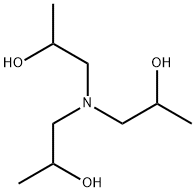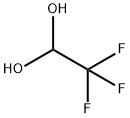A7681212
Triethylene diamine , 98% , 280-57-9
Synonym(s):
1,4-Diazabicyclo[2.2.2]octane;Triethylenediamine;TED;TMEM28;Transmembrane protein
CAS NO.:280-57-9
Empirical Formula: C6H12N2
Molecular Weight: 112.17
MDL number: MFCD00006689
EINECS: 205-999-9
| Pack Size | Price | Stock | Quantity |
| 25G | RMB28.80 | In Stock |
|
| 50G | RMB33.60 | In Stock |
|
| 100G | RMB48.00 | In Stock |
|
| 250G | RMB90.40 | In Stock |
|
| 500G | RMB183.20 | In Stock |
|
| 1KG | RMB280.00 | In Stock |
|
| 5KG | RMB1347.20 | In Stock |
|
| others | Enquire |
Update time: 2022-07-08
PRODUCT Properties
| Melting point: | 156-159 °C(lit.) |
| Boiling point: | 174 °C |
| Density | 1.02 g/mL |
| bulk density | 800kg/m3 |
| vapor pressure | 2.9 mm Hg ( 50 °C) |
| refractive index | n |
| Flash point: | 198 °F |
| storage temp. | Store below +30°C. |
| solubility | 400g/l |
| form | Hygroscopic Crystals |
| pka | 3.0, 8.7(at 25℃) |
| color | White to pale yellow |
| Water Solubility | 46 g/100 mL (26 ºC) |
| Sensitive | Hygroscopic |
| Merck | 14,9669 |
| BRN | 103618 |
| Stability: | Stable, but very hygroscopic. Incompatible with strong oxidizing agents, strong acids. Highly flammable. |
| LogP | -0.49 at 20℃ |
| CAS DataBase Reference | 280-57-9(CAS DataBase Reference) |
| NIST Chemistry Reference | Triethylenediamine(280-57-9) |
| EPA Substance Registry System | 1,4-Diazabicyclo[2.2.2]octane (280-57-9) |
Description and Uses
1,4-Diazabicyclo[2.2.2]octane is used as polyurethane catalyst, Balis-Hillman reaction catalyst complexing ligand and lewis base. It finds use in dye lasers and in mounting samples for fluorescence microscopy and as anti-fade reagent shown to scavenge free radicals due to flurochrome excitation of fluorochromes. Further, it is an oxidation and polymerization catalyst.
Safety
| Symbol(GHS) |    GHS02,GHS05,GHS07 |
| Signal word | Danger |
| Hazard statements | H228-H302-H315-H318 |
| Precautionary statements | P210-P240-P280-P301+P312-P302+P352-P305+P351+P338 |
| Hazard Codes | Xn,F |
| Risk Statements | 22-36/37/38-52/53-41-36/38-11 |
| Safety Statements | 26-60-37/39-3-16-36/37-61 |
| RIDADR | UN 1325 4.1/PG 2 |
| WGK Germany | 1 |
| RTECS | HM0354200 |
| F | 3 |
| Autoignition Temperature | 350 °C |
| TSCA | Yes |
| HazardClass | 8 |
| PackingGroup | III |
| HS Code | 29335920 |
| Hazardous Substances Data | 280-57-9(Hazardous Substances Data) |
| Toxicity | LD50 orally in Rabbit: 700 mg/kg |





